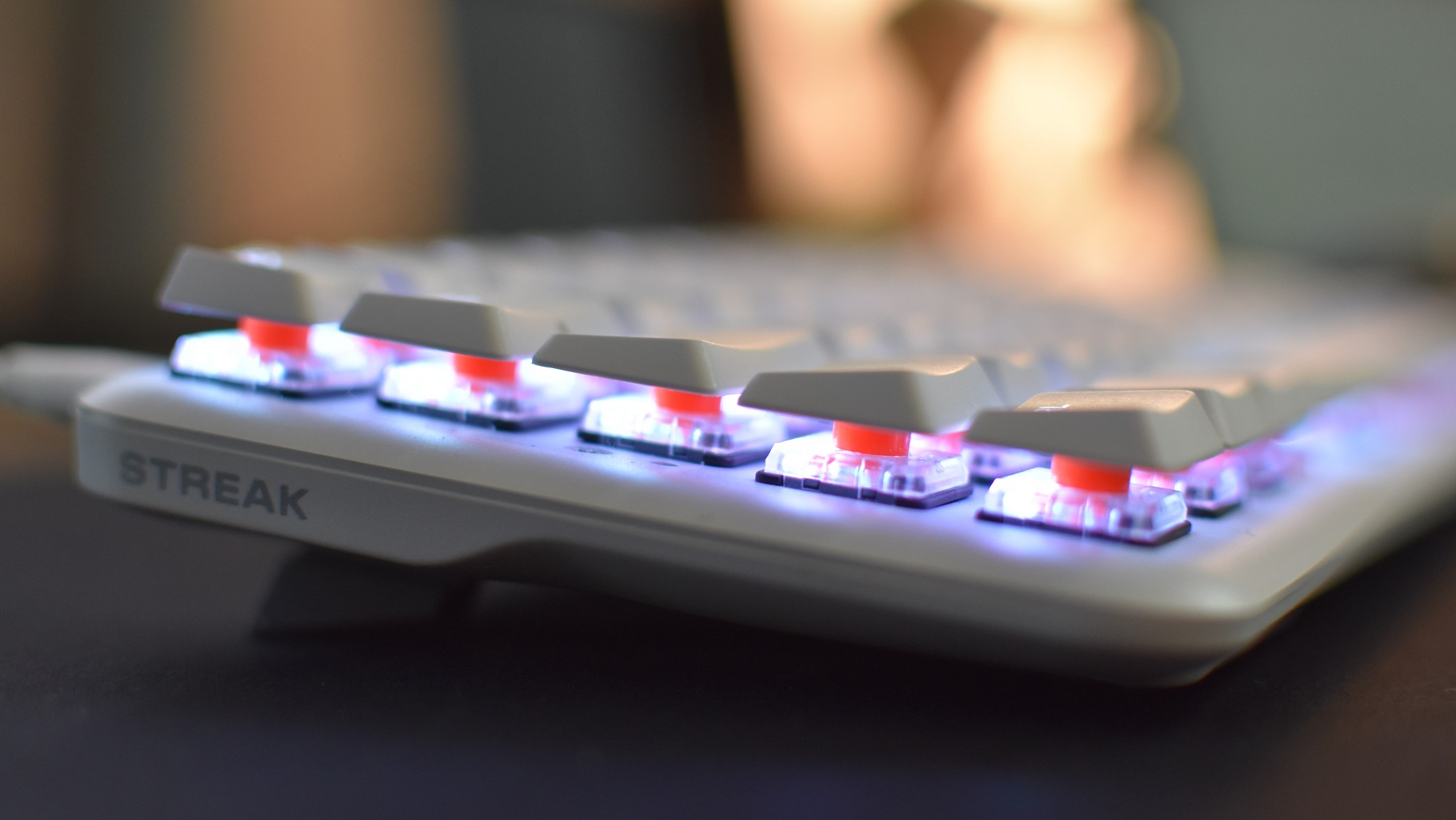Granted, much of this brilliance is inherited. The Streak65 LP has the same compact dimensions and low-profile, linear Fnatic Speed switches as the original, so it was always going to feel as good under your fingers. Even without the literal lightspeed tech of optical-mechanical keyboards, the Streak65 LP feels fantastically fast, and what the Speed switches lack in the meatiness of a deeper, clickier switch design, they more than make up for in agility. The half-height keycaps help maintain this sensation of speed, much as they did on the first Streak65, though this time they’re made from a higher-quality type of plastic. These PBT keycaps (that’s polybutylene terephthalate, for the chemists) go for more of a durable feel than the original’s ABS (acrylonitrile butadiene styrene) keycaps, though the biggest benefit isn’t the prevention of hypothetical breakages. It’s the texture: a pleasantly matte, but not rough, finish that directly upgrades the basic slick finish of the Streak65’s keys. In addition to being less of an oil magnet, the new Streak65 LP is quieter too. Sort of, anyway - although the clickless acoustics of the Speed switches are themselves unchanged, Fnatic has stuffed the Streak65 LP’s innards with dampening foam, eliminating pings when bottoming out a press. Together with the ever-so-slightly thicker keycaps, this keeps the clacking mellow and controlled, still with enough audio feedback for typing but none of the avoidable waste sound. It just sounds so clean, which I suppose fits with the icy white model I received (there’s a black model as well). I’m more ambivalent about the final change from the Streak65, which is the coiled cable. I get that a lot of people like these, though I’m evidently not as much of a fan of the Turkey Twizzer aesthetic. Still, the whole cable is braided now, which is an improvement no matter how you look at it, and you can still detach the cable via USB-C for easy transportation (or cheaper replacement if the cable gets damaged). Otherwise, all the best bits of the Streak65 are still here. There’s the lightweight yet sturdy build quality, thanks mainly to an aluminium frame, plus customisable inputs and RGB lighting. There are no dedicated function keys, but that’s normal for the 65% form factor, and you at least get proper arrow keys and four macro keys for games. The former have media control functionality too, via the Fn key. It’s probably not worth upgrading from the original keyboard if you already own it, particularly when the Streak65 LP is a pricey little board at £110 / $120. But then, that’s about what the standard Streak65 cost at launch, so you’re not getting stiffed on the upgrades. The bigger concern for brand-new buyers will be whether a 65% keyboard can provide all the buttons they need for their favourite games; as per usual, MMO and RTS games could easily overload it, unless you get very unorthodox with your bindings. With that in mind, the Streak65 LP does feel good enough that I’ve used nothing else for about a month now, despite me being profoundly pigheaded about changing my own bindings. For instance, with the lack of a tilde key forcing me to choose between being able to thank my Apex Legends teammates, perform hand-gymnastics to do it with Fn, or just put responses on a different key, I elected to simply be rude and stop thanking people. Could a lesser keyboard induce such rapid abandonment of logic and manners? For my sake, I hope not. For your sake, the Streak65 LP comes highly recommended.


